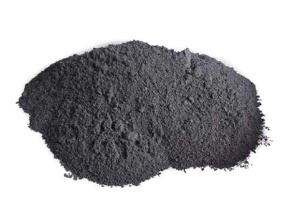Blog
Solemn commitment to quality integrity user first
What is the quantitative relationship between the compaction density of the battery-specific graphite and the energy density of the battery?
In today's era of rapid development of science and technology, as the core power source of various electronic devices, the performance of the battery directly affects the use experience and endurance of the device. As one of the key materials for battery, the relationship between the compaction density and the energy density of the battery has attracted much attention. First, we need to understand what compaction density is. The compaction density of graphite for battery refers to the mass of graphite material per unit volume under certain pressure. Simply put, the more tightly the graphite is compressed, the greater the density of the compaction. The battery energy density is a key indicator to measure the battery's ability to store energy, usually expressed in terms of the electrical energy stored per unit volume or unit mass. How does the compacted density of graphite for batteries affect the energy density of batteries? From the perspective of physical structure, when the compacted density of graphite increases, the gap between its particles decreases, which makes the electrode structure inside the battery more compact. During the charging and discharging of the battery, the transmission path of electrons and ions is shortened, and the transmission efficiency is improved. This is just like on the highway, the distance between vehicles is reduced, and the running speed and flow of traffic can be improved. The experimental data show that in a certain range, with the increase of graphite compaction density,
2024-08-16
In today's era of rapid development of science and technology, as the core power source of various electronic devices, the performance of the battery directly affects the use experience and endurance of the device. As one of the key materials for battery, the relationship between the compaction density and the energy density of the battery has attracted much attention.
First, we need to understand what compaction density is. The compaction density of graphite for battery refers to the mass of graphite material per unit volume under certain pressure. Simply put, the more tightly the graphite is compressed, the greater the density of the compaction. The battery energy density is a key indicator to measure the battery's ability to store energy, usually expressed in terms of the electrical energy stored per unit volume or unit mass.

How does the compacted density of graphite for batteries affect the energy density of batteries? From the perspective of physical structure, when the compacted density of graphite increases, the gap between its particles decreases, which makes the electrode structure inside the battery more compact. During the charging and discharging of the battery, the transmission path of electrons and ions is shortened, and the transmission efficiency is improved. This is just like on the highway, the distance between vehicles is reduced, and the running speed and flow of traffic can be improved.
Experimental data show that in a certain range, with the increase of graphite compaction density, the energy density of the battery will increase accordingly. For example, as the compaction density increases from X grams per cubic centimeter to Y grams per cubic centimeter, the energy density of the battery may increase by Z percent. However, this is not a simple linear relationship. When the compaction density exceeds a certain limit, it may lead to the breakage of graphite particles or the excessive tightness of the electrode structure, which will affect the diffusion and intercalation of ions, thereby reducing the performance of the battery.
Different types of batteries have different requirements for graphite compaction density. For example, lithium-ion batteries and sodium-ion batteries require different strategies for optimizing graphite compaction density due to differences in their operating principles and electrode materials. Lithium-ion batteries generally require higher packing densities to achieve higher energy densities, but care is also required to maintain good ion transport channels. Due to the large radius of sodium ions, the sodium ion battery has relatively loose requirements for graphite structure, but it is also necessary to reasonably control the compaction density to ensure the performance of the battery.
In order to achieve the match between the density of the battery-specific graphite compaction and the energy density of the battery, researchers and engineers continue to conduct in-depth research and exploration. By improving the preparation process of graphite, optimizing the particle size and shape distribution, and adopting advanced electrode manufacturing technology, they can accurately control the compaction density of graphite.
In short, there is a close quantitative relationship between the compaction density of battery-specific graphite and the energy density of the battery. Understanding and mastering this relationship is of great significance for improving the performance of batteries and promoting the development of battery technology. In the future development, we look forward to realizing the optimized combination of graphite compaction density and battery energy density through continuous innovation and optimization, so as to provide stronger and longer-lasting power support for our electronic devices.
RELATED INFORMATION

